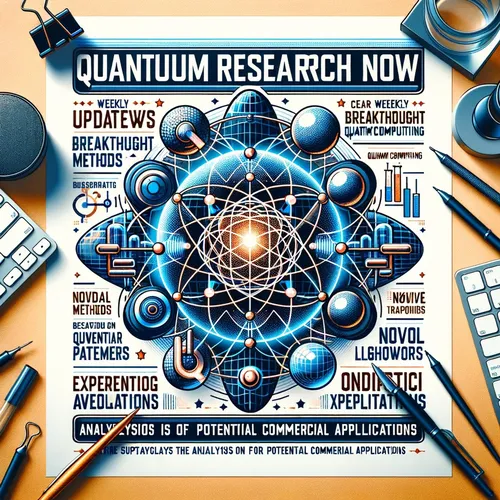Fujitsu's 10,000 Qubit Leap: Quantum Chess on a Planetary Scale
- Author
- Quiet. Please
- Published
- Fri 01 Aug 2025
- Episode Link
- https://www.spreaker.com/episode/fujitsu-s-10-000-qubit-leap-quantum-chess-on-a-planetary-scale--67217215
This is your Quantum Research Now podcast.
August 1st, 2025, and the air in the lab feels charged—like the whirring cryostats themselves are bracing for a breakthrough. I’m Leo, your Learning Enhanced Operator, here at Quantum Research Now. Today, two words headline nearly every quantum newsfeed: Fujitsu ascends.
This morning, Japan’s Fujitsu stunned the industry, officially launching an audacious R&D program to develop a superconducting quantum computer with over 10,000 physical qubits by 2030. That number isn’t just a statistic. For the uninitiated, imagine you’re in a chess tournament where each move splits the board into a million parallel games happening all at once—that’s qubit power. And 10,000 qubits is akin to running a simultaneous tournament in every city on the planet, all coordinated in lockstep.
The ambition: 250 logical qubits within five years, achieved through their new STAR architecture—an early fault-tolerant design that fundamentally rethinks how errors are detected, isolated, and corrected in quantum computation. If defining a logical qubit is like weaving a flawless silk thread from a thousand fraying fibers, then STAR is Fujitsu’s precision loom. Make one logical qubit immune to noise, and suddenly those impossible simulations become possible—new molecules, optimal logistics, unbreakable codes.
But this isn’t lone-ranger innovation. Fujitsu is joining forces with research titans AIST and RIKEN under Japan’s NEDO initiative. Teams are already designing new Josephson junctions—those are the ultra-fast quantum switches made from superconducting materials, as small as frost crystals on a windowpane. They’ll need packaging that can keep circuits colder than interstellar space, all while orchestrating billions of quantum operations per second.
Why does this matter? Most of us don’t need to simulate the universe, but here’s the parallel. Today’s hybrid electric cars combine two power sources to extend your range; similarly, quantum-classical hybrids are quietly transforming AI by letting quantum processors attack the hardest problems, then feeding answers back to classical systems. Companies like Spectral Capital are scaling this model now—strategically distributing tasks between old and new hardware, accelerating machine learning in ways that echo the collaborative style of the Fujitsu project.
Quantum computing’s progress is often described in hushed, almost reverent tones. But as I see it, today’s news is not just about leapfrogging benchmarks or national pride. It’s about building bridges—between disciplines, between continents, and between what was once merely imaginable and what is suddenly, breathtakingly real.
Thanks for tuning in to Quantum Research Now. If you have questions or want to suggest topics, send me an email at [email protected]. Subscribe wherever you listen—we’re a Quiet Please Production. For more info, check out quietplease.ai.
For more http://www.quietplease.ai
Get the best deals https://amzn.to/3ODvOta
